French gardens have a unique style and charm that can add beauty, elegance, and sophistication to any outdoor space. Whether you’re looking for formal hedges or whimsical topiaries, there are endless possibilities when it comes to creating the perfect French garden. From classic parterres and potager gardens to lush perennial beds and winding paths, there is something special about a French-inspired garden that will be sure to capture your heart. Here are some ideas for how you can bring the best of France into your backyard!
The History Of French-Style Gardens
The French have been creating beautiful gardens for centuries. Throughout time, the influence of different cultures has shaped and changed the styles used in these gardens.
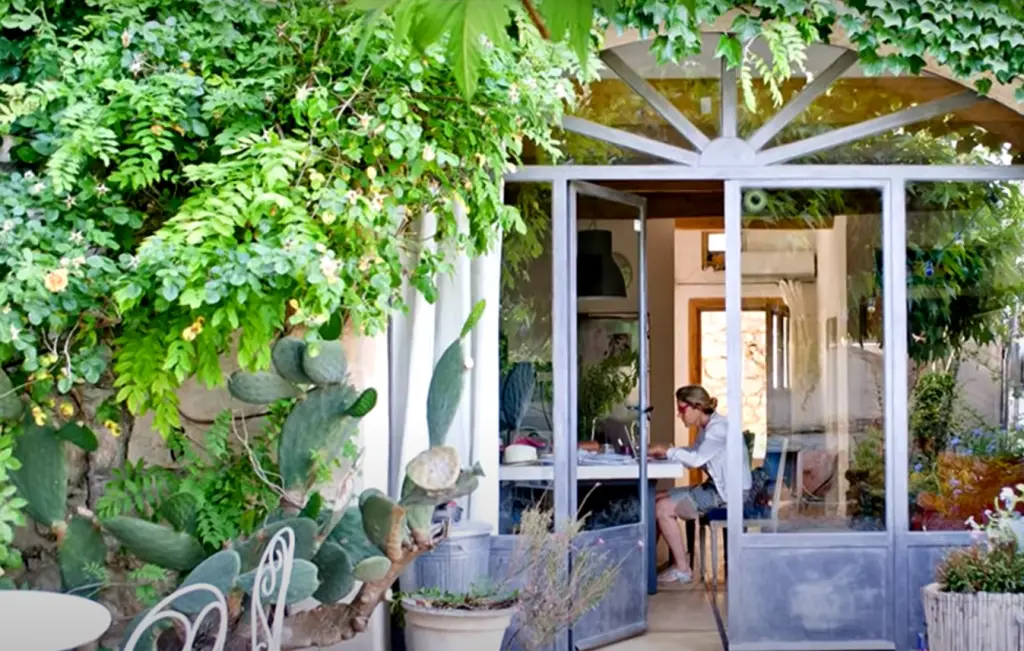
From medieval knot gardens to baroque-style parterres and bucolic English Landscape Gardens, each era has left its mark on this type of garden design. Today, classic French-style gardens are typically defined by their neatness and elegance, featuring a combination of geometric shapes and soft curves that create a sense of harmony and balance within the space.
Key Elements Of French-Style Garden Design
When it comes to designing a French-style garden, certain elements will help to create an authentic and inviting atmosphere. Here are some of the key points to consider when bringing your French-style garden design ideas to life:
- Choose classic plants and flowers associated with French gardens – Classic plants commonly seen in French gardens include lavender, sunflowers, roses, and clematis. All these flowers are fragrant as well as beautiful and can be used in abundance throughout your garden.
- Incorporate statuary into your garden design – Statues and sculptures were very popular in traditional European gardens, particularly those from France. Consider placing statues of classical figures or symbolic animals around the perimeter of your flower beds or near seating areas.
- Install a fountain – Fountains are synonymous with French gardens and give the space a sense of tranquility and elegance. A large stone fountain surrounded by lush foliage makes for an impressive focal point in any garden.
- Create winding pathways – The key to creating a true French-style garden is to make it seem as natural as possible. Pathways should be winding and informal, taking visitors on unexpected meandering journeys throughout the garden.
- Use bird baths and feeders – Birdbaths and bird feeders give your French-style garden another layer of authenticity and charm. By encouraging wildlife into your outdoor space, you can enjoy watching the birds flitting through the plants and flowers. [1]
French-Style Garden Care And Maintenance
Creating and maintaining a French-style garden can be an exciting and rewarding experience.
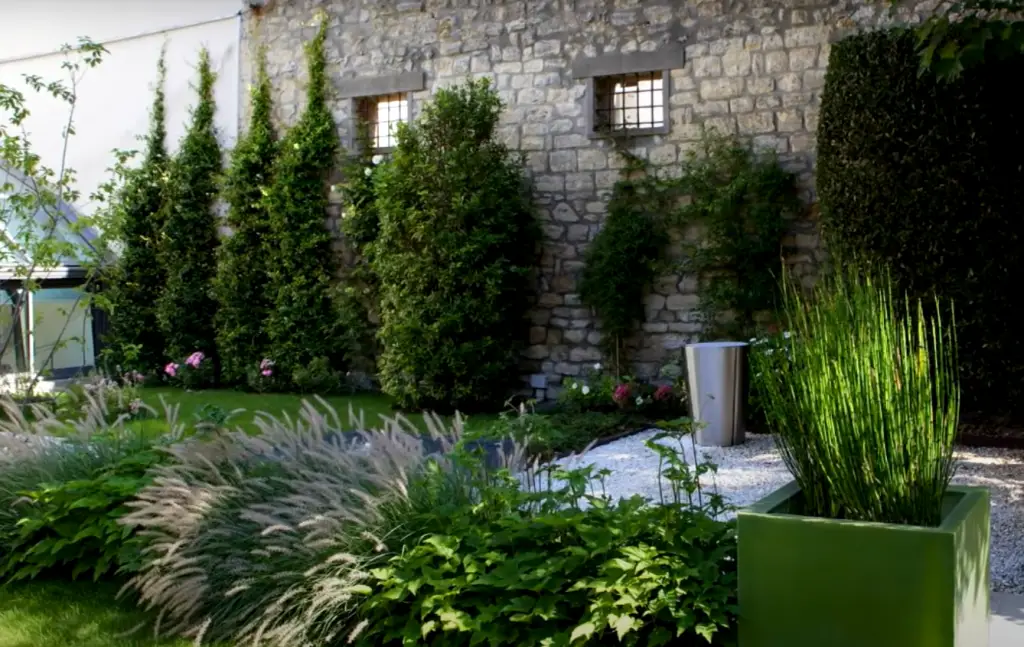
There are certain elements of care and maintenance that need to be addressed in order to keep your garden looking its best. Here are some tips on how to properly care for your French-style garden:
- Watering: A sufficient amount of water is essential for keeping the plants healthy in your French-style garden. The soil should be damp but not saturated, so check the moisture level before watering. Consider investing in a drip irrigation system so you don’t have to manually water your plants every day.
- Pruning: To maintain the desired shape of shrubs and other smaller plants, pruning is often necessary. Prune back plants to a desired height or shape and remove any dead or damaged branches.
- Mulching: To keep weeds from growing in your French-style garden, use mulch such as wood chips or bark around your plants. This will also help the soil retain moisture longer and provide nutrients to the plants.
- Fertilizing: Add fertilizer regularly to ensure that your plants are getting the proper nutrients they need to thrive. Choose a fertilizer specifically for flowers, shrubs, and trees depending on what you have planted in your garden. [2]
French Garden Ideas
Creating a French-style garden is an exciting way to add charm and sophistication to your outdoor space. Whether you have a small courtyard or a sprawling estate, these French garden ideas can help you create the perfect atmosphere for relaxation and entertaining.
Focus On Symmetry
Creating a formal French garden is all about symmetry. This means designing with straight lines and repeating patterns on either side of your garden’s central axis. Start by placing curved and symmetrical paths leading to the middle of your design, then add matching elements such as hedges, topiaries, trees, flowerbeds, or sculptures that are evenly spaced out.
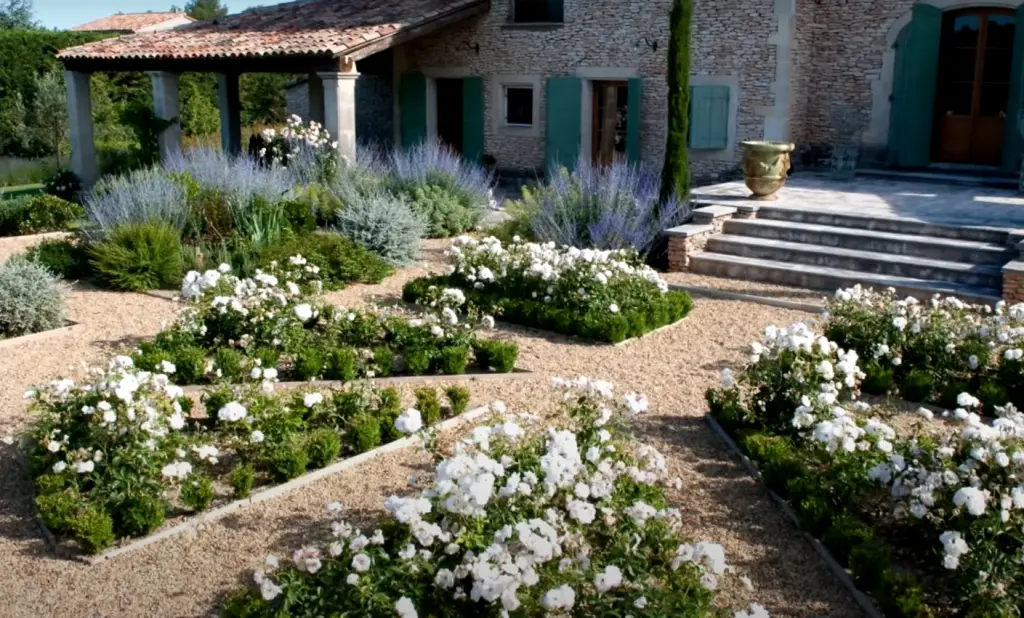
Use curves sparingly in order to maintain a feeling of balance throughout the space. When you’re finished, you should have an elegant and picturesque landscape that looks like something out of a fairy tale!
Use Geometric Patterns
One of the keys to creating a successful French garden is in choosing and incorporating geometric patterns. This is because French gardens are characterized by their use of geometrical lines and shapes, which can be seen in everything from pathways and hedges to flower beds and seating areas. Geometric patterns can also be used for fences, arbors, trellises, gazebos, pergolas, and other features to help create an elegant look. With careful planning and creative implementation you can make your garden stand out with geometric patterns that will increase the beauty of your outdoor space.
Highlight The Topiary
When it comes to French Garden Ideas, the topiary style is a classic that must be highlighted. This traditional garden design, also known as a clipped hedge, features all types of shrubs and trees being trimmed into either simple or intricate shapes. In other words, this type of garden art requires skillful pruning to maintain its desired form. Topiaries are one of the most beautiful ways to bring structure and height to any outdoor space. Whether you’re looking for something elaborate or just a few basic plants in a certain shape – like a geometric pattern – these living sculptures can make your garden stand out from the rest! [3]
Grow Citrus Trees In Pots
Growing citrus trees in pots is an easy and effective way to enjoy the sweet aroma of these delightful fruit-bearing trees. Citrus trees thrive in sunny, warm climates and can be easily cultivated indoors or outdoors in a pot. To get started, find a container that is at least 10 inches deep for your tree to grow in with some extra room for root growth.
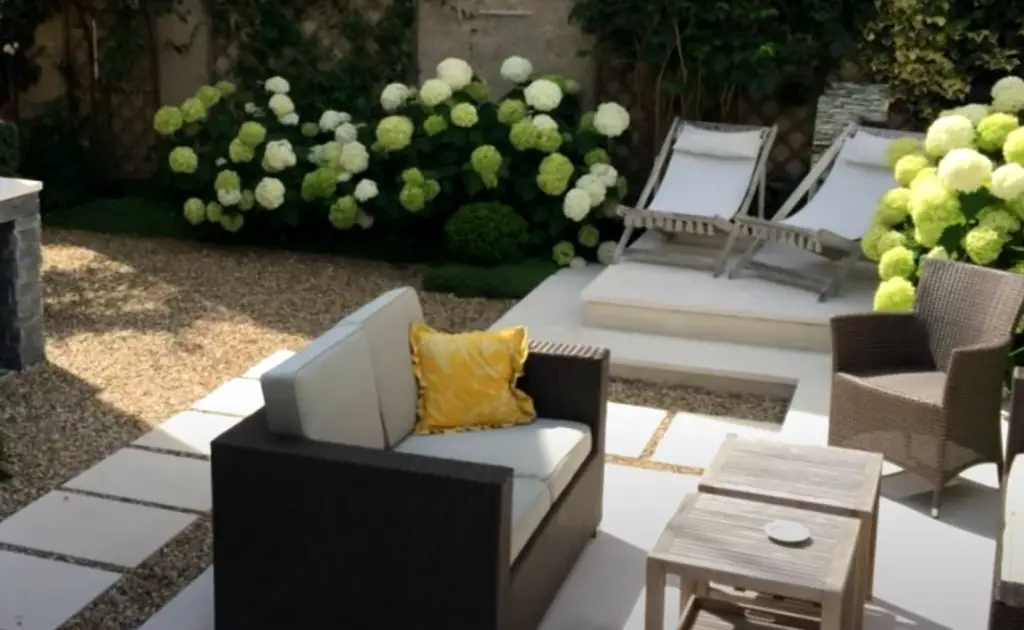
Fill it with rich organic soil and add plenty of compost to provide nutrition for the growing roots. Place your potted citrus tree somewhere with plenty of sunlight, such as near a south-facing window or outside on a patio that gets direct sun throughout the day. Water regularly and don’t let the soil dry out completely between waterings.
Introduce Stonework For Added Interest
Stonework is a great way to add interest and texture to your French garden. Rock walls, pathways, and borders can all be used to create the feeling of an old world estate. When selecting stones for these features, look for materials with interesting shapes and colors that bring a sense of history to your space. For larger areas such as retaining walls, flagstone or slate may be ideal while brick pavers are perfect for pathways. If you’re looking to add more character and charm, consider adding a water feature like a fountain or pond – complete with large stones around the perimeter.
Opt For Slow-Growing Plants
If you’re looking for French garden ideas, opt for slow-growing plants.
Woodland perennials such as foxglove, astilbe, and hostas provide striking colors that will last through the season with minimal maintenance. To add to your garden’s beauty, introduce some annuals such as pansies and petunias in full bloom when summer begins. Finally, complete the look by planting low-maintenance evergreens like boxwood or yew shrubs around your flower beds. These will create an inviting atmosphere without needing too much attention. With these slow-growing plants in place, your French garden can be enjoyed season after season.Consider Incorporating Borders
One of the great advantages of French gardens is that they can be customized to suit any size or landscape. When planning a French garden, incorporating borders around certain elements is a great way to make them stand out and add definition to your overall design. Edging materials such as brick, stone, gravel, and even metal can help divide up different sections of the garden while also providing a neat and tidy appearance. These borders also provide structure for plants and greenery which can help keep them in check and create an orderly look. Consider utilizing multiple border designs as well to give each section its own unique flair within the overall garden design. [4]
Grow Wall Climbing Plants
Wall climbing plants can be a great way to add more interest and texture to your French garden. You can easily create a wall of cascading greenery that looks like it was designed by a professional landscape architect. Popular plants for this purpose include ivy, clematis, and jasmine. These types of plants will take on interesting shapes as they climb up your walls and provide plenty of visual interest when in bloom. With the right pruning techniques, you can even train them to form unique patterns or designs that truly set your garden apart from the rest. If you have old walls or structures in your garden, consider giving them a new purpose with some beautiful wall climbing plants!
Sculptures As The Focal Point
Adding sculptures to your french garden can give it a classic feel and an air of elegance. Whether you choose a classic piece like the Venus de Milo or something more contemporary, sculptures can provide the perfect focal point for your garden. Consider installing a grand fountain in the center of the garden as well – this is especially beautiful if you have a large area to work with.

Be sure to use materials that are resistant to weathering and won’t be damaged by exposure to moisture. You may also want to consider using statues of mythological creatures or animals. For example, adding stone lions at the entrance will make guests feel like they’ve been invited into another world when they enter your garden. If you’re looking for something more dramatic, consider a larger statue like the Winged Victory of Samothrace. This majestic piece will be sure to give your garden an impressive presence.
The Addition Of A Gazebo
A gazebo is an excellent way to add a unique touch of elegance and romance to any French-style garden. Gazebos come in many different shapes, sizes, and materials, allowing you to create the perfect spot for entertaining guests or relaxing outside with a good book. A gazebo can also be used as a focal point in your garden, providing visual interest and helping to define the overall style. Add luxurious detailing such as ornate wrought iron railings or carved stone columns for an extra dose of French flair. With its romantic form and timeless beauty, a gazebo is sure to become one of the most beloved features of your French-inspired garden. [5]
Ways To Create Your French Garden
Creating a French garden is a great way to add charm and elegance to your outdoor spaces. There are several ways to create the look of a French garden including using traditional materials, incorporating geometric shapes, and taking inspiration from nature.
Display Traditional Planters
Traditional planters are a great way to bring a French garden look to your outdoor space. You can find these planters in many shapes and colors, such as terracotta or even painted metal.
Place beautiful plants in each of the planters, like lavender, rosemary and daisies.Choose Iron And Marble Furniture
When creating a French garden, there are some essential elements to consider. One of the most important is furniture. Iron and marble furniture pieces have long been associated with French-style gardens for their classic look and durability. Iron chairs, tables, benches, arbors, and other pieces can be found in a variety of styles ranging from traditional to modern that will add elegance and sophistication to your outdoor space. Marble also adds an air of timelessness to your outdoor décor.
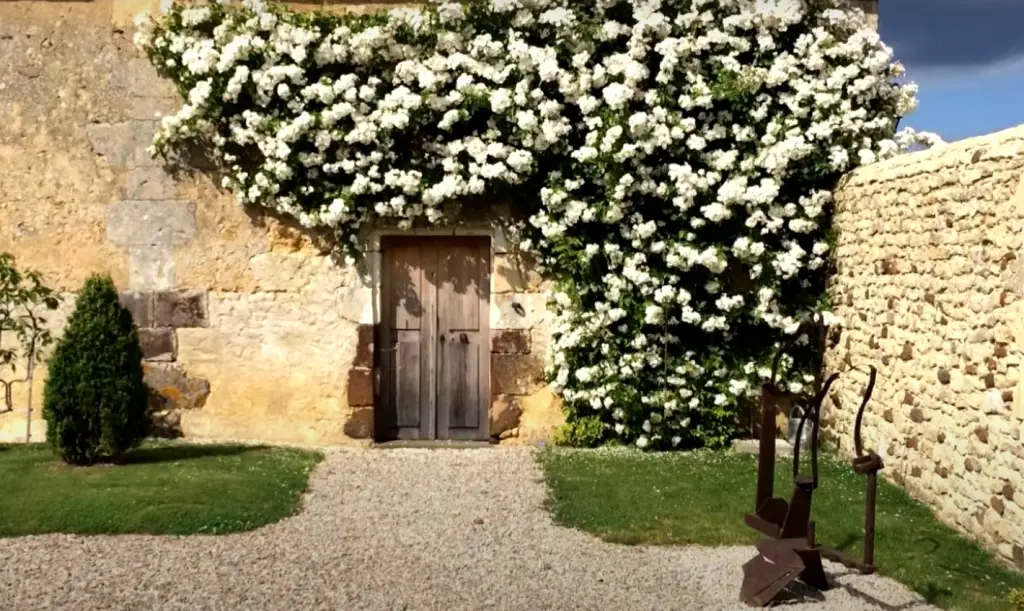
Use pieces such as fountain figures or birdbaths crafted from white marble to bring a sense of grandeur to your French garden. For an even more luxurious touch, choose oversized chaise lounges or daybeds made from white marble for cozy seating areas. Finally, add some finishing touches with wrought iron planters and fixtures for a truly French-inspired look.
Decorate With Rustic Accents
When it comes to adding style and charm to a French garden, rustic accents can really make the space come alive. Consider using natural elements such as stone benches and bird baths, as well as antique-style metal decor like planter boxes, trellises, or chandeliers. You can also add some whimsy with vintage decorations like windmills, sundials, and other weathervanes. Just be sure that they all have an aged look to them in order to give your garden that true French feel. With so many options at your disposal, you’ll be able to create a rustic French atmosphere perfect for entertaining guests or simply enjoying on your own!
Make A Sculptural Statement
Adding an architectural element to your French garden design can create a striking focal point. Incorporating sculptures or ornamentation that has a classical feel is the perfect way to highlight the traditional elements of your garden. Choose statues and sculptures in shapes like birds, animals, and abstract designs to complete the look. If you’re looking for something more natural, opt for plants with beautiful foliage and flowers that will stand out from the greenery around them. Whether it’s a grand statue or an ornamental topiary, make sure to choose pieces that complement each other and bring an elevated level of sophistication to your French-inspired garden.
Complement Architectural Elements
Complement existing elements of your home’s architecture by incorporating French garden design ideas into a garden. A variety of structures, such as arbors, trellises and pergolas, can be used to create an elegant look.
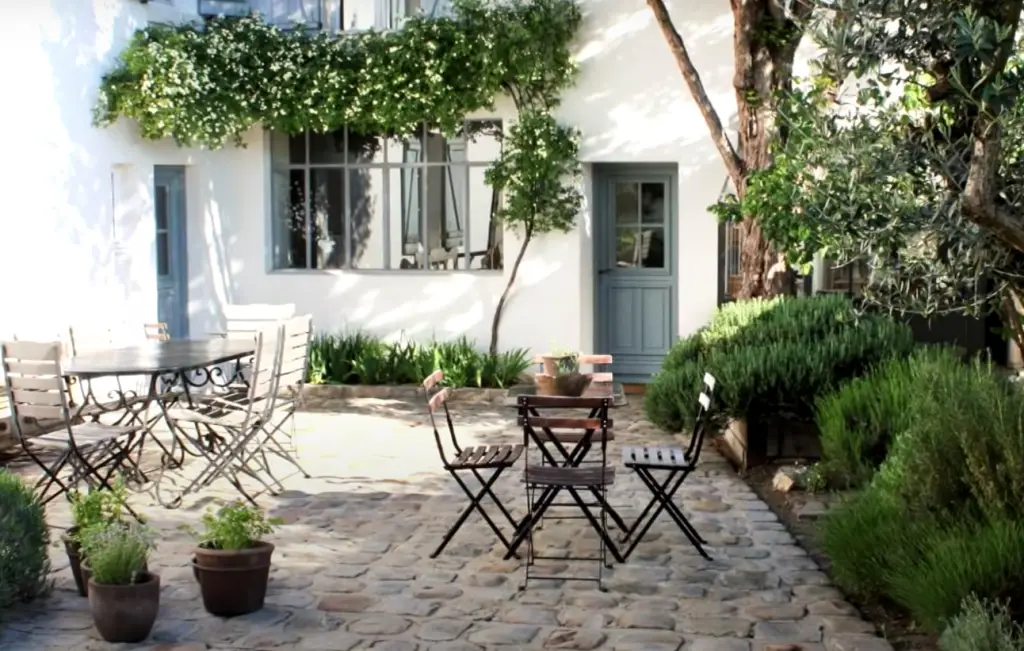
Plant climbing vines or roses along the structure for a romantic touch. Garden beds should use a combination of curved lines and circles to add visual interest. Add statuary, fountains and other decorative pieces that reflect the French style. For more formal gardens, pair boxwood hedges with low growing shrubs such as lavender or rosemary in geometric shapes like squares or octagons. Pathways through the garden should use flagstone or brick pavers arranged in patterns leading up to the focal point of the garden. Statues, bird baths and other decorative features can be added to the pathways for a truly authentic French garden look. [6]
FAQ
How do you plan a French garden?
It typically takes some planning and research to create a French garden. Start with an overall design plan that includes the desired plants, hardscapes, and other features so you have an idea of what the finished product will look like. After that, it’s time to get your hands dirty! Start by preparing the soil for planting and laying down any necessary foundation materials such as stone or brick work. Then, begin planting flowers and shrubs according to your design plan. Finally, make sure to finish off the garden by adding in accessories such as furniture, decorations, lighting, and water features. With some patience and attention to detail you can have a beautiful French-style garden in no time!
What plants are used in French gardens?
Traditionally, French gardens feature a variety of plants and flowers, including roses, boxwoods, lavender, irises, daisies, hollyhocks, geraniums and clematis. Many of these plants are native to the region and thrive in temperate climates. The use of topiary is also common in French-style gardening; shrubs such as cypress trees can be clipped into ornamental shapes that complement the overall design. In addition to plants, other elements such as arbors or trellises covered with climbing vines or wisteria often appear in French gardens. Other features such as benches and fountains may also be included for visual interest. When designing a French garden it is important to consider the scale and proportion of each element as well as its placement in relation to the other elements. This will create a sense of balance that is essential for creating an attractive garden.
What is a French country garden?
A French country garden is an elegant, sophisticated way to bring the beauty of the French countryside into your backyard. These gardens feature classic elements such as formal flower beds, clipped hedges, statuary, and fountains all arranged in a symmetrical design. The overall effect is one of grandeur that can be seen in many of France’s great estates.
What are 3 plants in France?
- Lavender: This fragrant purple flower is native to the Mediterranean region and is a popular choice for French gardens. It provides color and aromatherapy, making it one of the most beloved plants in France.
- Rosemary: This evergreen shrub has small, needle-like leaves that are used as an herb in cooking. It can also be used in landscaping as a ground cover or an edging plant with its deep blue flowers blooming from spring to late summer.
- Boxwood Hedges: These evergreen shrubs are perfect for creating formal geometric shapes or providing a natural border for your garden. They require minimal care, but may need to be trimmed once every few years to maintain their shape. Other popular plants in French gardens include lavender, rosemary, cyclamen, and wisteria.
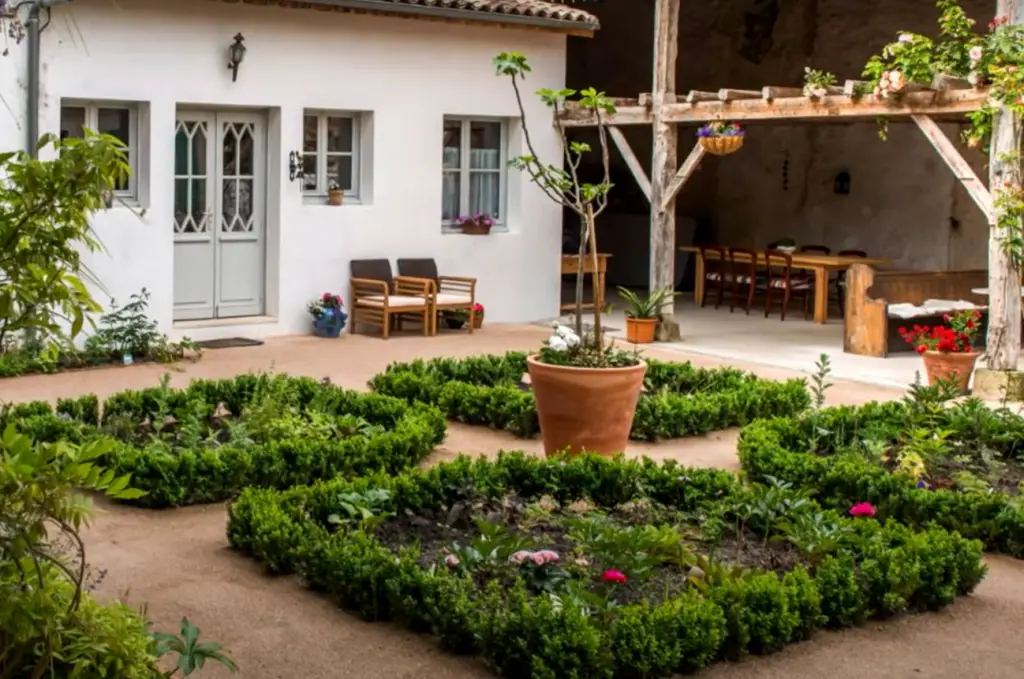
Whether you’re creating a formal garden or a casual cottage garden, incorporating these native French plants will give your garden an authentic touch. Not only are they beautiful, but many of them also have medicinal properties that can be beneficial for health and relaxation.
What are the colors of the French garden?
The colors of a French garden are typically muted and subtle, with natural shades of green as the predominant color. These shades can range from vibrant emeralds to soft pastels depending on the plants used in the garden. Other colors often found in French gardens include whites, blues, purples, and pinks. The use of these softer hues creates an inviting atmosphere that encourages visitors to linger and appreciate the beauty of nature. Additionally, adding pops of bright yellow or orange can draw attention to certain areas in the garden and create focal points. By using a combination of both muted and brighter tones within a French garden design, a unique look can be created that is truly one-of-a-kind.
What is an example of a French garden?
A French garden is a style of garden that originated in the 17th century with an emphasis on formal structure, symmetry and grandeur. An example of a French garden would be one featuring manicured hedges, symmetrical flower beds, geometric paths, statuary and classical elements like obelisks and urns. Other characteristics may include topiary sculptures, fountains, reflecting pools and gravel pathways. Many gardens also feature buildings such as pavilions or follies to enhance their beauty. The key to achieving this elegant look lies in keeping the lines straight and maintaining neatness throughout the entire composition. It is also important to use plants that bloom throughout all seasons for color variation from spring to winter. By using these features together with simple but beautiful furniture pieces, a French garden can be created.
What is the French style of landscape gardening?
The French style of landscape gardening is characterized by its lavish and symmetrical designs featuring geometric and curvilinear shapes. It is known for its use of topiary, ornamental trees and shrubs, colorful flowers, gravel pathways, and fountains or other water features. The gardens typically have a formal structure with raised beds, walls or fences to define spaces, along with terraces, steps and arbors to add visual interest. This type of garden emphasizes texture and contrast through the combination of various plants and hardscaping materials such as brick, stone or marble. These gardens are usually intended to be viewed from all angles so they can be appreciated in their entirety. By combining elements of the natural environment with design principles found in classical architecture, French gardens are able to create an atmosphere of timeless grace and beauty.
What is the difference between Italian and French gardens?
Italian and French gardens are both classic styles of European garden design that have influenced gardening across the world. However, there are several key differences between these two popular styles. The Italian garden style is marked by its emphasis on grandeur and symmetry. Pathways, terraces, and fountains often feature prominently in this type of garden, designed to create a sense of awe when viewed from a distance. By contrast, French gardens emphasize more natural elements and curves as well as plenty of green foliage. The goal is to bring an air of romance to the outdoor space with features such as meandering pathways lined with hedges and trees, flowerbeds full of colorful blooms, and water features such as ponds or streams surrounded by greenery. Both Italian and French gardens can be beautiful additions to any home, but the differences between them should be taken into account when designing your own garden. Whether you prefer the opulence of an Italian design or the charm of a French one, these two styles have a timeless look that will add elegance to any outdoor space.
What is a typical French flower?
A typical French flower is the lavender. This fragrant, flowering plant has become synonymous with France thanks to its presence in countless gardens throughout the country. Lavender is a great choice for creating a classic French garden look and can be paired with other plants such as roses, echinacea, and delphiniums for an even more traditional design.
Lavender’s soft purple hue adds color and fragrance to any outdoor space and is considered an essential part of any French-inspired garden. Additionally, rosemary, thyme, oregano, chamomile, sage, tarragon and mint are also common herbs used in French gardens. These aromatic plants bring flavor to meals while adding interest to the landscape.
What plant is the symbol of France?
The fleur-de-lis is the most iconic symbol of France and is often used to represent the country. This flower has been adopted by French royalty and has become a popular motif in gardens all over the world. The lily is a classic choice for adding an elegant, traditional touch to any outdoor space. It can be paired with other varieties of flowers or plants to create a more diverse look. For example, roses combined with fleur-de-lis can create an eye-catching contrast that will draw attention to your garden. Other types of flowers and plants that are commonly found in French gardens include lavender, boxwood hedges, ivy, and climbing roses. These elements can be used together or separately to create a unique and beautiful outdoor space.
What is the natural flower of France?
The natural flower of France is the Iris, which is also known as fleur-de-lis or lily of the valley. This exquisite flower is native to Central and Southern Europe and is a symbol of royalty in French culture. The delicate petals come in shades of purple, white, blue and yellow and are often used in bouquets, boutonnieres, corsages and hairpieces. Other popular flowers found in French gardens include roses, peonies, lilacs, lavenders, marigolds and forget-me-nots. Ornamental grasses add texture and height while boxwood hedges create structure and definition. Herbs like thyme, oregano and rosemary are commonly found as well, and are often used in French cuisine. By choosing the right combination of flowers, plants and greenery, you can bring a touch of France to your garden.
What makes a home French?
A French-style home is not just about the architectural elements, but also about the overall look and feel. To create a true French-style atmosphere, there are several elements that should be incorporated into the design. Firstly, windows should always be dressed with shutters – either wooden or metal – to give an air of sophistication to any room.
Useful Video: Planning our DREAM Modern FRENCH COUNTRY Garden! 37 ideas!
Conclusion
Creating a French-style garden requires careful planning, thoughtful design and attention to detail. Traditional elements such as clipped hedges, boxwood plants, manicured lawns and fountains can all be incorporated into a modern French-style garden. Choose light and airy colors for plantings to create an elegant outdoor space that reflects the spirit of the French countryside. With careful planning and consideration for style, a French-style garden can be brought to life in any size space.
References:
- https://www.chezpluie.com/blogs/news/8-ways-to-create-your-french-garden
- https://www.veranda.com/outdoor-garden/g1134/beautiful-french-gardens/
- https://www.thespruce.com/what-is-a-french-garden-5069891
- https://www.gardenista.com/posts/10-garden-ideas-to-steal-from-france/
- https://billyoh.com/extra/diy-guides/french-garden-ideas/
- https://www.hgtv.com/outdoors/gardens/garden-styles-and-types/french-garden-desig






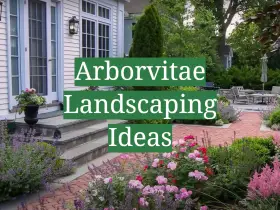



Leave a Reply
View Comments